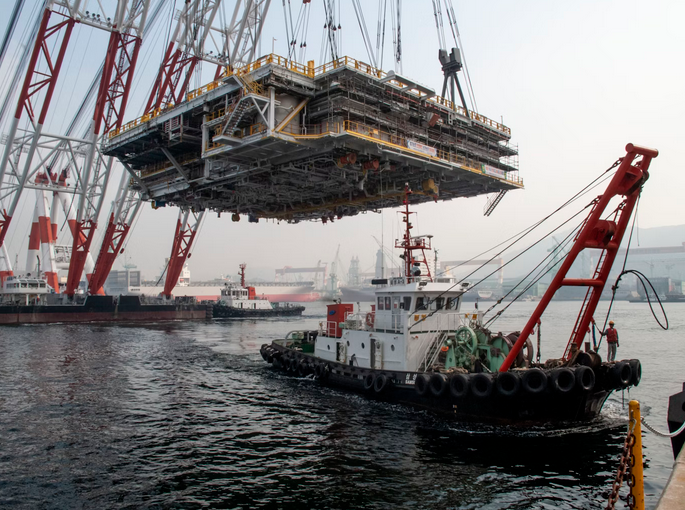Planning a Successful Heavy Lifting Job? Here’s What You Need to Consider Before Hiring Rigging Equipment

Are you gearing up for a heavy-lifting job but feeling overwhelmed by the sheer magnitude of it? Don’t fret. Before diving headfirst into this challenging task, it’s crucial to consider all the essential factors that contribute to a successful operation. One key aspect that often gets overlooked is hiring the right rigging equipment. In this blog post, we’ll walk you through everything you need to know before making any decisions.
Load Capacity and Specifications

The first and foremost consideration when hiring heavy lift rigging equipment is ensuring that it aligns with the specific requirements of your project. Assess the load capacity and specifications of the equipment in relation to the weight, size, and dimensions of the load to be lifted. Exceeding the load capacity or using equipment that does not meet the specifications can result in safety hazards and damage to both the equipment and the load.
Be meticulous in understanding the details of your lifting needs and choose rigging equipment that can handle the task safely and efficiently. The fact that Lifting Gear Hire & Sales often offers details regarding the specifications of their equipment makes it easier for clients to know exactly what they are getting.
Certification and Compliance
Safety is paramount in any heavy lifting operation, and using certified and compliant equipment is non-negotiable. Before hiring rigging equipment, verify that it meets industry standards and regulations. Look for certifications from relevant authorities and ensure that the equipment has been properly maintained and inspected. Compliance with safety standards not only mitigates risks but also demonstrates a commitment to maintaining a safe working environment. Failure to adhere to certification and compliance standards can lead to legal consequences and compromise the safety of the entire project.
Equipment Condition and Maintenance History
The condition of the rigging equipment is a critical factor in ensuring a smooth and safe lifting operation. Before finalizing any rental agreement, thoroughly inspect the equipment and inquire about its maintenance history. Well-maintained equipment is less prone to malfunctions and breakdowns, reducing the risk of accidents during lifting operations. Request documentation of regular maintenance checks and look for signs of wear and tear on key components. If the equipment has a history of reliability issues, it’s advisable to explore alternative options to avoid project delays and safety concerns.
Operator Training and Expertise

Even the most advanced rigging equipment is only as effective as the operator controlling it. Before renting heavy lift rigging equipment, ensure that the operator has the necessary training and expertise to handle the specific equipment being used. Verify certifications and licenses and inquire about the operator’s experience with similar projects. Competent operators not only ensure the safe and efficient use of the equipment but also contribute to the overall success of the lifting operation. Investing in well-trained operators is a key aspect of risk management in heavy-lifting scenarios.
Project Planning and Site Assessment
Each lifting project is unique, and a one-size-fits-all approach to heavy lifting rigging may lead to inefficiencies and safety risks. Engage in thorough project planning and conduct a comprehensive site assessment before hiring rigging equipment. Consider factors such as the layout of the site, environmental conditions, and any potential obstacles that may impact the lifting operation. Tailor the choice of rigging equipment to the specific needs of your project, ensuring that it is well-suited to the site conditions and the nature of the load being lifted.
Hiring heavy lift rigging equipment is a strategic decision that requires careful consideration of various factors to ensure the success and safety of lifting operations. By matching equipment to the task, prioritizing certification and compliance, assessing equipment condition and maintenance history, ensuring operator training and expertise, and tailoring solutions to project needs through effective planning and site assessment, businesses can navigate the complexities of heavy lifting with confidence.…


 One of the benefits of starting your own Manchester based video production company is that you can work from home. You don’t have to commute into the city daily or leave your house if you don’t want to. This can save you a lot of time and money and give you the flexibility to work when it suits you best. This is something that is becoming increasingly popular with businesses of all sizes, as it allows them to save on office space and other overheads. If you have the right equipment, you can easily set up a comfortable and efficient home office. This means you can work from anywhere worldwide, as long as you have an internet connection. You will need to ensure that you have a good quality webcam, microphone, and a fast computer.
One of the benefits of starting your own Manchester based video production company is that you can work from home. You don’t have to commute into the city daily or leave your house if you don’t want to. This can save you a lot of time and money and give you the flexibility to work when it suits you best. This is something that is becoming increasingly popular with businesses of all sizes, as it allows them to save on office space and other overheads. If you have the right equipment, you can easily set up a comfortable and efficient home office. This means you can work from anywhere worldwide, as long as you have an internet connection. You will need to ensure that you have a good quality webcam, microphone, and a fast computer. One of the biggest advantages is the flexibility that comes with owning your own video production
One of the biggest advantages is the flexibility that comes with owning your own video production 
 Many people tend to take a long time before starting different types of businesses. This is mainly because most enterprises require a lot of capital to start and run; this is not the case of drop servicing. You might need to invest in a domain name and a website to showcase the type of services you are selling.
Many people tend to take a long time before starting different types of businesses. This is mainly because most enterprises require a lot of capital to start and run; this is not the case of drop servicing. You might need to invest in a domain name and a website to showcase the type of services you are selling. Just like any other business, people start drop servicing to make some money. The good news is that you can make a lot of money by creating a drop servicing business.
Just like any other business, people start drop servicing to make some money. The good news is that you can make a lot of money by creating a drop servicing business.